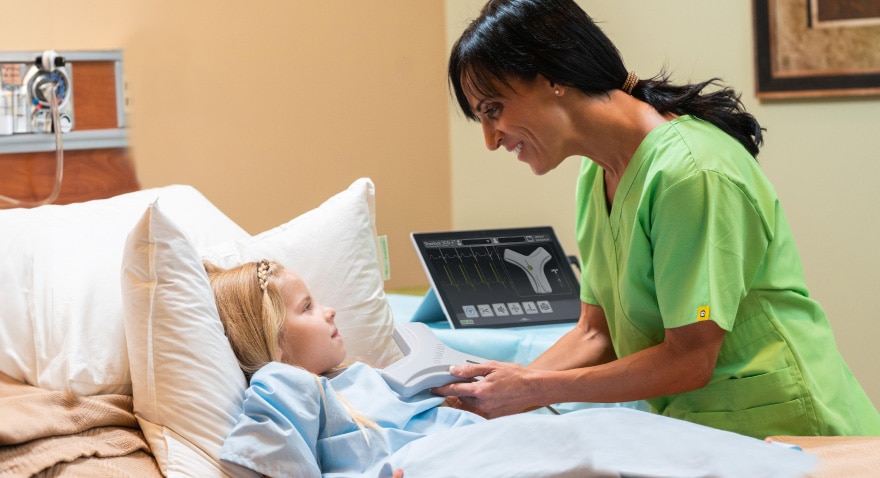The Sherlock 3CG+™ TCS simplifies the PICC insertion process by combining CVAD tip placement technology into select Site~Rite™ Ultrasound Systems.
The SiteRite 9™ Ultrasound System is a "one-stop shop" for PICC placement:
- Evaluate and assess patient vasculature
- Select and access the appropriate vessel
- Use the Sherlock 3CG+™ TCS tip tracking technology to locate and navigate the catheter tip to the SVC
- Use the Sherlock 3CG+™ TCS ECG technology to distinguish changes in P-wave amplitude
- Confirm catheter tip placement at the CAJ without the need for a confirmatory chest X-ray
- DICOM or printed documentation





